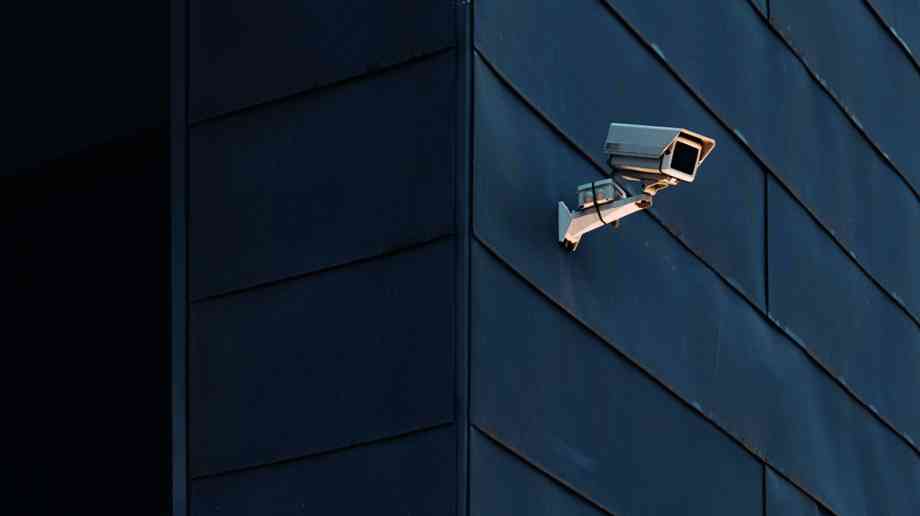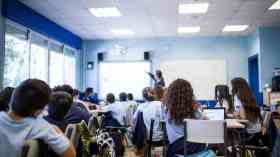
School security – going beyond duty of care
One of the greatest challenges for any education establishment is balancing the need to create an open and stimulating environment that encourages learning, whilst ensuring that people and equipment are protected from security threats.
Written by The British Security Industry Association (BSIA)
As in any public institution, security should feature as a priority. One of the greatest challenges for any education establishment is balancing the need to create an open and stimulating environment that encourages learning, whilst ensuring that the people and equipment within feel comfortable and are protected from security threats no matter the size of the campus or the number of pupils and staff.
All establishments present specific challenges from a security perspective and the educational sector is no different. Examples of security incidents revolve around bullying, petty theft, abuse and vandalism. But sometimes the threats can be more serious – extending to arson, theft, serious incidents involving a weapon, cyber-attacks and criminal damage.
The gov.uk website stresses the importance of having a security policy in schools which complement the safeguarding policies relating to the health, safety and well-being of students and staff. A good security policy helps both students and staff to be vigilant about their own and the safety and security of others and demonstrate knowledge of issues which could affect them. These should reflect a realistic assessment of the threats relevant to the school or college and can be drawn on experiences or statistics provided by trusted sources.
As the voice of the professional security industry, we encourage and support excellence in the industry and our members demonstrate quality and professionalism.
When approached to write about perimeter security in schools, we thought it best to ask our members who have first-hand experience and chose four key areas: CCTV or video surveillance, perimeter security systems, biometrics and access control.
CCTV
“The rise of facial recognition has given CCTV a bad name, but its impact on security and safety remains second to none. In schools, this is particularly important – to secure the premises and the students and staff within it, and as a deterrent for potential criminal activity,” comments Tim Raynor from Johnson Controls UK&I.
“CCTV can be used to monitor behaviour on a site, to provide a deterrent against violent attacks and help prosecute those responsible if necessary. As schools increase the amount of high-value technology on site, the potential for theft grows. With school budgets ever under strain, a CCTV investment is a major deterrent for potential thieves. The same applies for vandalism, especially since most schools no longer have a caretaker on site 24/7 – a remote monitoring centre can do the same job.
“But the opportunities presented by CCTV go far beyond security – and many educational institutions aren’t getting the most out of their investment. Using CCTV with teachers’ consent could help with staff training, and with identifying and deterring truants. Looking to video analytics could improve on-site safety, by creating better flow systems for fire safety and evacuation procedures, or by identifying large groups and alerting staff to potential safety hazards.”
Perimeter Security
The first and most important step to school security is to conduct a thorough site security survey, believes Ashley Smith from Tensor. This security audit will highlight any existing vulnerabilities, but also help determine whether there are any existing systems in place that can be taken over in order to reduce deployment costs.
Ashley said: “We also look at possible integrations that would further benefit the school. We have platforms which can integrate with existing fire & intruder alarms, as well as bespoke software plugins to allow schools to easily monitor and manage staff & student attendance and access rights. Our security solutions can also streamline emergency evacuations by automatically adding on removing them from the fire roll call as they arrive or leave the site. We favour an integrated approach to Perimeter Security.
“The next step is for engineers to design and install an Access Control/perimeter security system that delivers on its core features - securing and monitoring entry points, enabling only authorized members of staff to access the premises, protecting staff, pupils and assets, enabling fast and orderly evacuation in an emergency, etc. – while also allowing for efficient school operation.”
Biometrics
Controlsoft is part of the BSIA’s Access and Asset Protection (AAP) section. The company’s case study with Alsop High School highlights the positive benefits of a biometric security system and a planned security integration policy.
Alsop High School Liverpool is one of the largest secondary schools in the region. In 2010 the Building Schools for the Future (BSF) programme provided Alsop with a grant to improve the overall infrastructure.
As part of the the BSF programme, business manager Safer Osmani, decided to implement a fingerprint access control system due to students constantly losing or not carrying their access cards with them.
He had three main criteria points which needed to be met: size, speed and redundancy. For size, he had to consider if the reader could handle a database of over 1,000 users. For speed, identification had to be fast with a database of over 1,000 users. Consideration also had to be given on where fingerprint templates would be stored so access control decisions could continue if connection to the PC failed.
In 2012, this system had ninety doors controlled by fingerprint readers with just over nine hundred staff and students enrolled. By that time the system had been operational throughout the school for two and a half years. Osmani said at the time: “I am still impressed with the quick identification speed of the readers and the overall performance of the system. I also get very good support from Controlsoft as and when I need it, which is also very important.”
Jonathan Summers from Controlsoft, said: “The fact that the Controlsoft door control units and fingerprint readers are IP-addressable has allowed the installer to use the school’s existing network cabling infrastructure in these large buildings, thereby saving the school money and delivering a “greener” solution.”
Access Control
Orchard Junior School in Hampshire needed an easy to manage and reliable means of improving school security whilst allowing staff access to the main school entrance. Staff previously used a keypad providing a minimum-security solution for approximately 30 staff members. Changes were sought after due to three reasons: children copying codes, mechanical failure of the buttons and water ingress.
NanoQuest from Nortech was fitted by Southampton based security installer, Complete Security, to provide a cost-effective means of managing staff access and enhancing security.
NanoQuest is Nortech’s standalone proximity based integrated access controller and reader.
It was supplied with contactless key fobs to provide a simple effective solution that was well within the school’s budget. The contactless proximity technology used in the unit eliminates wear and tear, and the risks posed by easy–to-copy PIN codes. As the unit combines a proximity reader and controller it can be easily incorporated into an expanded system as funds allow, providing a simple yet effective entry-level solution.
For more information on finding quality security companies and case studies on security solutions in schools visit the BSIA website.
Latest News
10/11/2025 - 10:27
New data from Tesco's Fruit & Veg for Schools programme shows that 94% of teachers reported improved behaviour from pupils taking part in the scheme, including sharper focus and more energy in the classroom.
07/11/2025 - 09:54
The Scottish Government has announced funding which will go to local councils for strategic approaches to closing the poverty-related attainment gap.
06/11/2025 - 09:42
Ofsted has shared findings from pilot inspections carried out in 115 schools this autumn, ahead of the full rollout of its renewed inspection framework.
06/11/2025 - 09:16
The TV, radio and multi media campaign deals with the root causes of absences and identifies ways to approach conversations about wellbeing that can help pupils to improve their attendance.
05/11/2025 - 09:49
The government will publish a new set of enrichment benchmarks, with schools asked to ensure every child has access to activities across five categories of enrichment.







